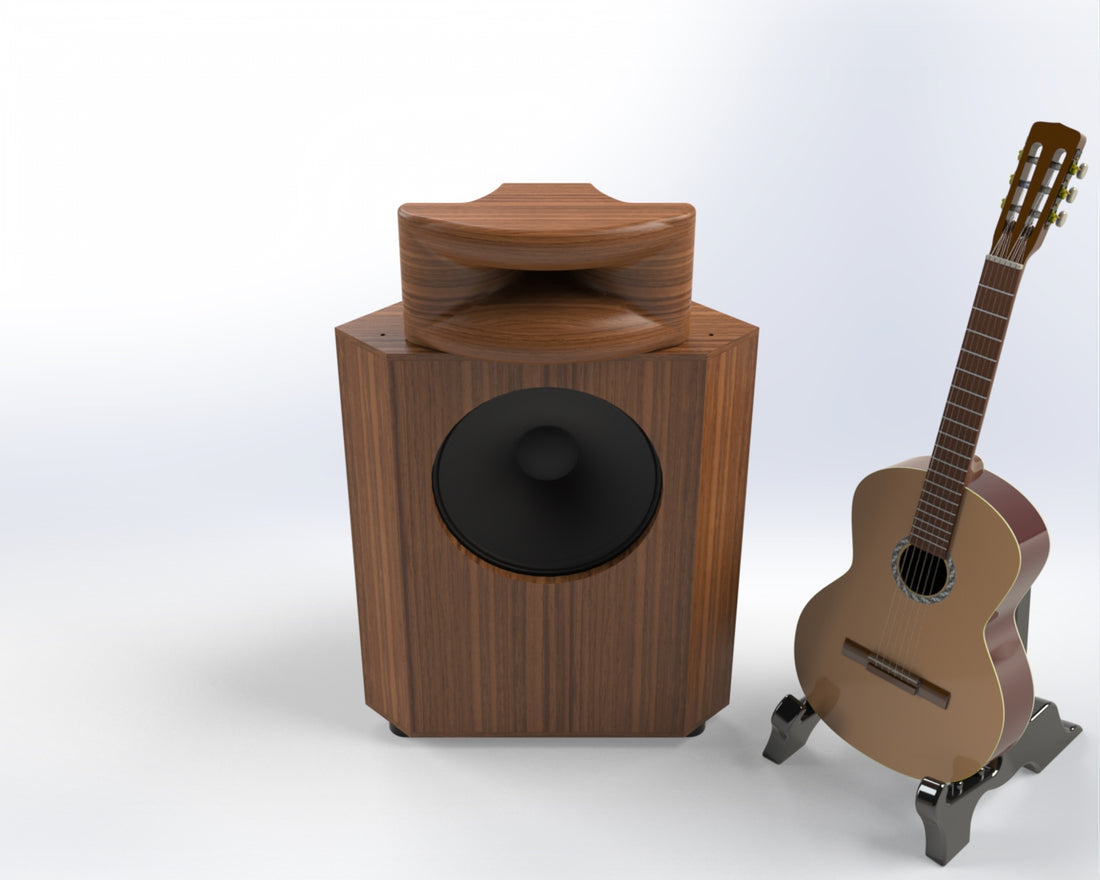A few months ago I introduced speaker plan No.1786 which offers excellent sound quality, high sensitivity, and controlled coverage.
Below is a picture of the original plan.

I wanted to offer the possibility to using one of my biradial horns instead of the plastic horn originally specified in the plans. Below is a render shown with the ES-600 Biradail No.1076 featuring a 1.4" throat.


I now offer the option of using the ES-600 Biradial in the plan set for Speaker No.1786. When you purchase the plans for 1786 you will also receive a new zipped folder called "1815" that includes the updated crossover schematic as well as the 3D CAD files to make the horn.


This blog post looks at some of the test results from that change.
We start with the raw frequency response on the ES-600 Biradial with the SB Audience 64CDN-T compression driver.

How does this compare to the plastic horn specified in the plans? Below we see the raw response graph of the SB Audience H280 horn. I've included this information for quick comparison.

Continuing on with the crossover, I settled on a first order for both the woofer and high frequency. I settled on this topology after extensive listening tests and I simply felt the first order sounded better than 2nd or 3rd order slopes. Soundstage depth and coherency was maintained to a level that is on par with a single fullrange driver, which got me excited. The first order slopes are only possible with very well behaved drivers.
Below is the result I settled on. Note how the woofer begins to fall at 500Hz but it only down by -6dB by 1kHz. By 2kHz the woofer is 12dB making this a 6dB/octave slope. This is with a simple 8mH inductor on the low pass. This is only possible because this particular woofer still sounds good even with such a gentle roll off.


The high frequency has a relatively small capacitor value which gradually rolls the high frequency in starting at 600Hz (-12down) and by 3kHz we are at full level. This lightens the load on the driver in terms of modulating distortion into the upper treble. If I attempt to play loud music with a steep filter at 600Hz the driver will sound stressed across it's bandwidth.
We see a very well behaved off-axis where we start to see good pattern control coming in at around 800Hz. Having this pattern control will pay dividends in perceived clarity and dynamics.

Time Domain
The step response explain why I'm hearing coherency on par with single full range drivers. The initial rise and fall is extremely fast along with perfect alignment with the woofer's impulse.

Looking at a gated burst decay we can see a good result with a minor resonance at the 8kHz region. We can ignore the resonances starting in the 2kHz region since those are reflections in my room.

Distortion
Harmonic distortion is shown at 95dB test SPL. Distortion remains low through the bass region at only 0.38% for H2.

Intermodulation distortion is hovering around the -55dB region for bass and -65dB for midrange.

For high tones we see -55dB at 10kHz (0.17%).

